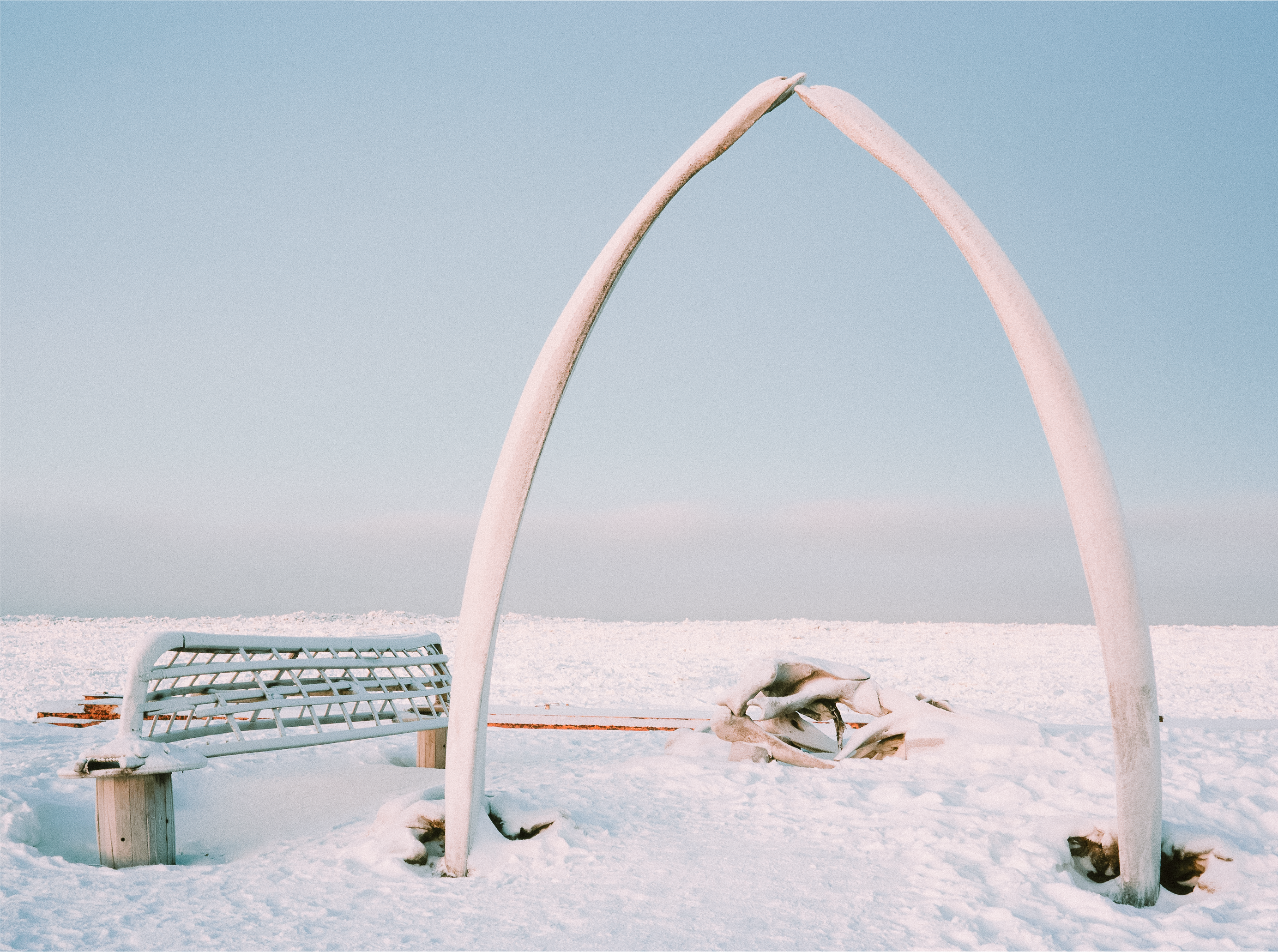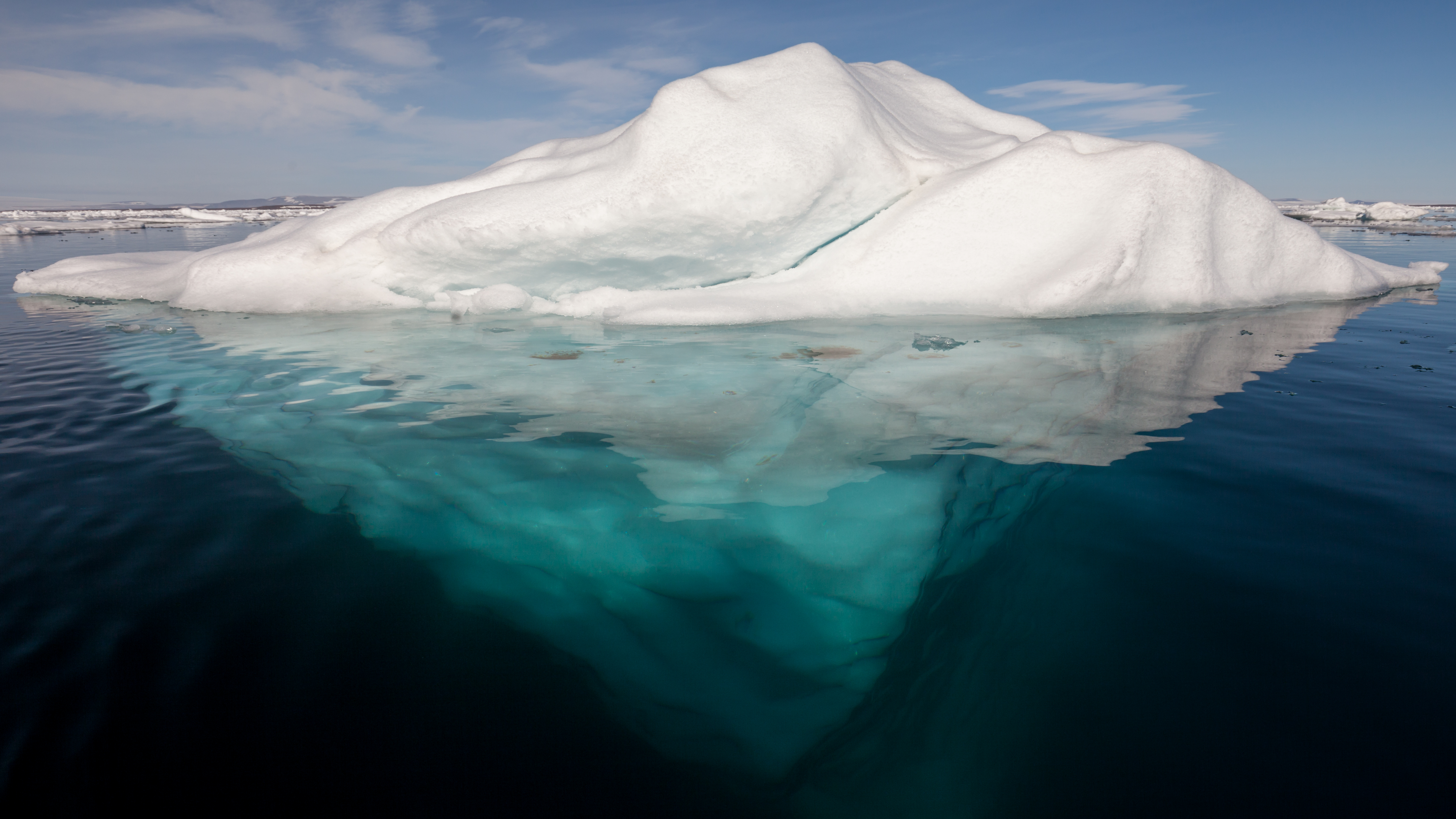|
Ice Shove
An ice shove (also known as fast ice, an ice surge, ice push, ice heave, shoreline ice pileup, ice piling, ice thrust, ice tsunami, ice ride-up, or ''ivu'' in Iñupiat) is a surge of ice from an ocean or large lake onto the shore. Ice shoves are caused by ocean currents, strong winds, or temperature differences pushing ice onto the shore, creating piles up to 12 metres (40 feet) high. Ice shoves can be caused by temperature fluctuations, wind action, or changing water levels and can cause devastation to coastal Arctic communities. Cyclical climate change will also play a role in the formation and frequency of ice shove events; a rise in global temperatures leads to more open water to facilitate ice movement. Low pressure systems will destabilize ice sheets and send them shoreward. Also referred to as "landfast ice", it is an essential component to the coastal sea ice system, including the sediment dynamics. Arctic peoples utilize these ice shoves to travel and hunt. Ringed seals ... [...More Info...] [...Related Items...] OR: [Wikipedia] [Google] [Baidu] |
Barrow Alaska
Utqiagvik ( ; , ), formerly known as Barrow ( ), is the borough seat and largest city of the North Slope Borough in the U.S. state of Alaska. Located north of the Arctic Circle, it is one of the northernmost cities and towns in the world and the northernmost in the United States, with nearby Point Barrow as the country's northernmost point. Utqiaġvik's population was 4,927 at the 2020 census, an increase from 4,212 in 2010. It is the 12th-most populated city in Alaska. Name The location has been home to the Iñupiat, an indigenous Inuit ethnic group, for more than 1,500 years. The city's Iñupiaq name refers to a place for gathering wild roots. It is derived from the Iñupiat word , also used for '' Claytonia tuberosa'' (" Eskimo potato"). The name was first recorded by European explorers in 1853 as "Ot-ki-a-wing" by Commander Rochfort Maguire, Royal Navy. John Simpson's native map dated 1855 has the name "Otkiawik", which was later misprinted on a British Admiralty c ... [...More Info...] [...Related Items...] OR: [Wikipedia] [Google] [Baidu] |
Beaufort Gyre
The Beaufort Gyre is one of the two major ocean currents in the Arctic Ocean. It is roughly located north of the Alaskan and Canadian coast. In the past, Arctic sea-ice would circulate in the Beaufort gyre up to several years, leading to the formation of very thick multi-year sea-ice. Due to warming temperatures in the Arctic, the gyre has lost an extensive amount of ice, practically turning what used to be a nursery for sea-ice to mature and grow into the thickest and oldest ice of the Arctic Ocean into a "graveyard" for older ice. Dynamical mechanisms Conditions in the Arctic have favored sea ice loss in recent years during the Northern Hemisphere summers. At the end of the 20th century, analyses of increasing Pacific Surface Water temperatures led to the discovery of a connection between these rising temperatures and the onset of severe loss of Arctic sea ice in the Beaufort Sea. A reason for the existence of this link was proposed: "...delayed winter ice formation allows for mo ... [...More Info...] [...Related Items...] OR: [Wikipedia] [Google] [Baidu] |
Transpolar Drift Stream
The Transpolar Drift Stream is a major ocean current of the Arctic Ocean, transporting surface waters and sea ice from the Laptev Sea and the East Siberian Sea towards Fram Strait. Drift experiments with ships such as the Fram or the Tara expedition showed that the drift takes between two and four years. Recent satellite data and the most recent drift experiment, MOSAiC, shows that the current has accelerated and ice drifts much faster than earlier, in less than two years across the Arctic Ocean. In 1937, Pyotr Shirshov at the Soviet drift ice station North Pole-1 described this drift. The stream conveys water in roughly two major routes to the northern Atlantic Ocean at a rate of about per day. Primarily wind-driven, it flows roughly from the northern coast of Russia and Alaska, sometimes curving toward the Beaufort Sea before exiting to the Atlantic Ocean. It has been cited as a major factor in the North Atlantic oscillation and Arctic oscillation atmospheric changes. The ... [...More Info...] [...Related Items...] OR: [Wikipedia] [Google] [Baidu] |
Drift Ice
Drift or Drifts may refer to: Geography * Drift or ford (crossing) of a river * Drift (navigation), difference between heading and course of a vessel * Drift, Kentucky, unincorporated community in the United States * In Cornwall, England: ** Drift, Cornwall, village ** Drift Reservoir, associated with the village Science, technology, and physics * Directional Recoil Identification from Tracks, a dark-matter experiment * Drift (video gaming), a typical game-controller malfunction * Drift pin, metalworking tool for localizing hammer blows and for aligning holes * Drift (geology), deposited material of glacial origin * drift (in mining), a roughly horizontal passage; an adit * Drift, linear term of a stochastic process * Drift (motorsport), the controlled sliding of a vehicle through a sharp turn, either via over-steering with sudden sharp braking, or counter-steering with a sudden "clutch kick" acceleration * Incremental changes: ** Drift (linguistics), a type of language ... [...More Info...] [...Related Items...] OR: [Wikipedia] [Google] [Baidu] |
YouTube
YouTube is an American social media and online video sharing platform owned by Google. YouTube was founded on February 14, 2005, by Steve Chen, Chad Hurley, and Jawed Karim who were three former employees of PayPal. Headquartered in San Bruno, California, it is the second-most-visited website in the world, after Google Search. In January 2024, YouTube had more than 2.7billion monthly active users, who collectively watched more than one billion hours of videos every day. , videos were being uploaded to the platform at a rate of more than 500 hours of content per minute, and , there were approximately 14.8billion videos in total. On November 13, 2006, YouTube was purchased by Google for $1.65 billion (equivalent to $ billion in ). Google expanded YouTube's business model of generating revenue from advertisements alone, to offering paid content such as movies and exclusive content produced by and for YouTube. It also offers YouTube Premium, a paid subs ... [...More Info...] [...Related Items...] OR: [Wikipedia] [Google] [Baidu] |
CBC News
CBC News is the division of the Canadian Broadcasting Corporation responsible for the news gathering and production of news programs on the corporation's English-language operations, namely CBC Television, CBC Radio, CBC News Network, and CBC.ca. Founded in 1941 by the public broadcaster, CBC News is the largest news broadcaster in Canada and has local, regional, and national broadcasts and stations. It frequently collaborates with its organizationally separate French-language counterpart, Radio-Canada Info. History The first CBC newscast was a bilingual radio report on November 2, 1936. The CBC News Service was inaugurated during World War II on January 1, 1941, when Dan McArthur, chief news editor, had Wells Ritchie prepare for the announcer Charles Jennings a national report at 8:00 pm. Previously, CBC relied on The Canadian Press to provide it with wire copy for its news bulletins. Readers who followed Jennings were Lorne Greene, Frank Herbert and Earl Cameron. '' ... [...More Info...] [...Related Items...] OR: [Wikipedia] [Google] [Baidu] |
Thunder
Thunder is the sound caused by lightning. Depending upon the distance from and nature of the lightning, it can range from a long, low rumble to a sudden, loud crack. The sudden increase in temperature and hence pressure caused by the lightning produces rapid Thermal expansion, expansion of the air in the path of a Lightning strike, lightning bolt. In turn, this expansion of air creates a Shock wave, sonic shock wave, often referred to as a "thunderclap" or "peal of thunder". The scientific study of thunder is known as ''brontology'' and the irrational fear (phobia) of thunder is called ''brontophobia''. Etymology The ''d'' in Modern English ''thunder'' (from earlier Old English ''þunor'') is epenthetic, and is now found as well in Modern Dutch ''donder'' (cf. Middle Dutch ''donre''; also Old Norse ''þorr'', Old Frisian ''þuner'', Old High German ''donar'', all ultimately descended from Proto-Germanic *''þunraz''). In Latin the term was ''tonare'' "to thunder". The name of the ... [...More Info...] [...Related Items...] OR: [Wikipedia] [Google] [Baidu] |
Train
A train (from Old French , from Latin">-4; we might wonder whether there's a point at which it's appropriate to talk of the beginnings of French, that is, when it wa ... , from Latin , "to pull, to draw") is a series of connected vehicles that run along a railway track and Passenger train, transport people or Rail freight transport, freight. Trains are typically pulled or pushed by locomotives (often known simply as "engines"), though some are self-propelled, such as multiple units or railcars. Passengers and cargo are carried in railroad cars, also known as wagons or carriages. Trains are designed to a certain gauge, or distance between rails. Most trains operate on steel tracks with steel wheels, the low friction of which makes them more efficient than other forms of transport. Many countries use rail transport. Trains have their roots in wagonways, which used railway tracks and were powered by horses or pulled by cables. Following the invention of the steam locomo ... [...More Info...] [...Related Items...] OR: [Wikipedia] [Google] [Baidu] |
Iceberg
An iceberg is a piece of fresh water ice more than long that has broken off a glacier or an ice shelf and is floating freely in open water. Smaller chunks of floating glacially derived ice are called "growlers" or "bergy bits". Much of an iceberg is below the water's surface, which led to the expression " tip of the iceberg" to illustrate a small part of a larger unseen issue. Icebergs are considered a serious maritime hazard. Icebergs vary considerably in size and shape. Icebergs that calve from glaciers in Greenland are often irregularly shaped while Antarctic ice shelves often produce large tabular (table top) icebergs. The largest iceberg in recent history, named B-15, was measured at nearly in 2000. The largest iceberg on record was an Antarctic tabular iceberg measuring sighted west of Scott Island, in the South Pacific Ocean, by the USS ''Glacier'' on November 12, 1956. This iceberg was larger than Belgium. Etymology The word ''iceberg'' is a partial loan tr ... [...More Info...] [...Related Items...] OR: [Wikipedia] [Google] [Baidu] |
Tsunami
A tsunami ( ; from , ) is a series of waves in a water body caused by the displacement of a large volume of water, generally in an ocean or a large lake. Earthquakes, volcanic eruptions and underwater explosions (including detonations, landslides, glacier calvings, meteorite impacts and other disturbances) above or below water all have the potential to generate a tsunami. Unlike normal ocean waves, which are generated by wind, or tides, which are in turn generated by the gravitational pull of the Moon and the Sun, a tsunami is generated by the displacement of water from a large event. Tsunami waves do not resemble normal undersea currents or sea waves because their wavelength is far longer. Rather than appearing as a breaking wave, a tsunami may instead initially resemble a rapidly rising tide. For this reason, it is often referred to as a tidal wave, although this usage is not favoured by the scientific community because it might give the false impression of ... [...More Info...] [...Related Items...] OR: [Wikipedia] [Google] [Baidu] |





